November 4, 2007, Île de Gorée, Dakar, Senegal
When the ferry was ready for us, everyone in the waiting room squeezed through two small exits onto the dock. Then, we crossed over to the ferry with two guys grabbing each passenger to help them across the one foot wide step to get on board. Once on board, the two Germans and I sat on the upper deck. I chose a spot in the shade. In port next to us was a giant container and cargo ship, twelve stories tall. The ferry boat is new, launched in 2006 under the name of Beer. The Germans and I joked quite a bit about that… like, how come no free beer on board? 😉

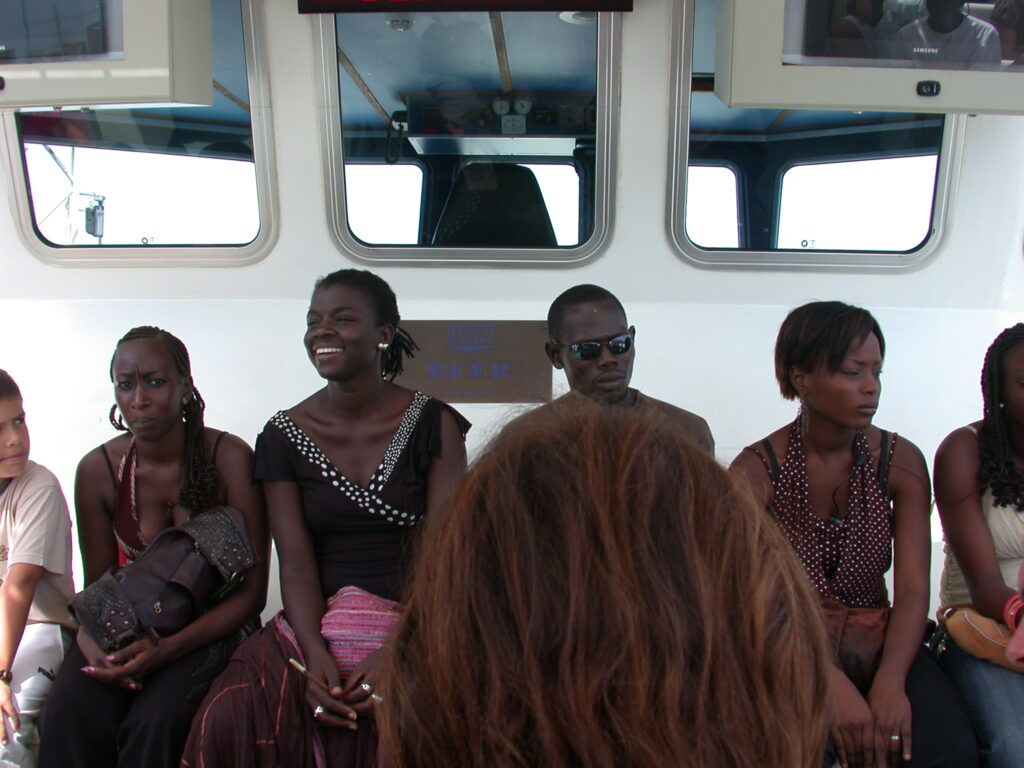
From the ferry, we had excellent views back to the Dakar harbor and Cape Vert (I think it’s called).
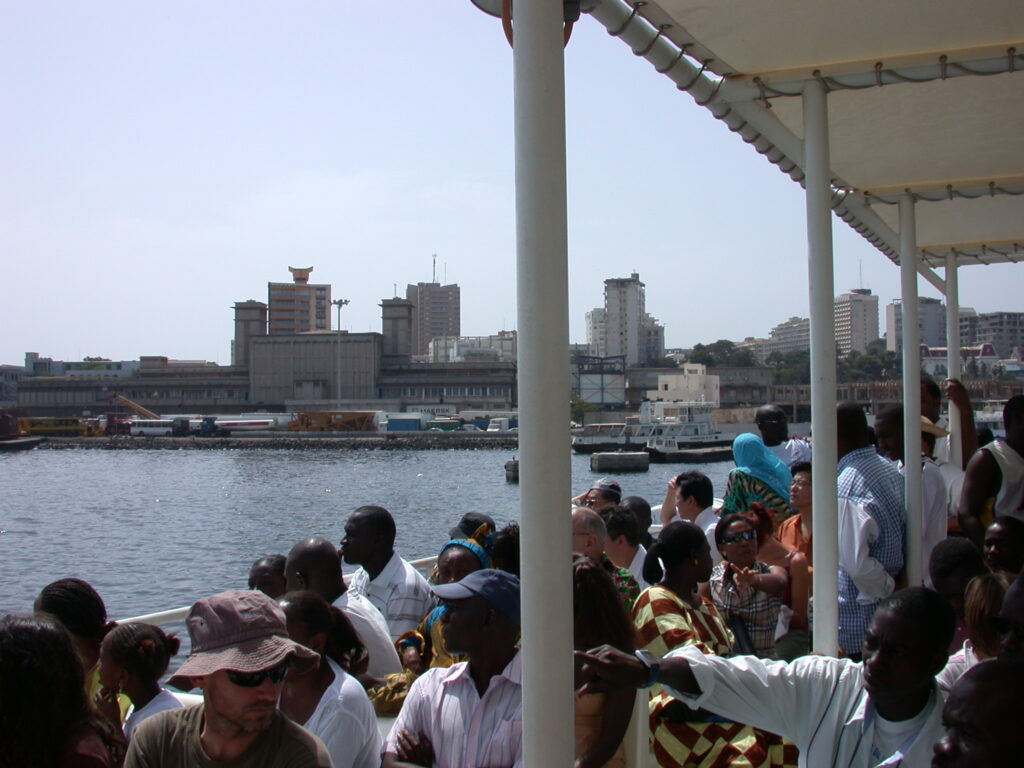
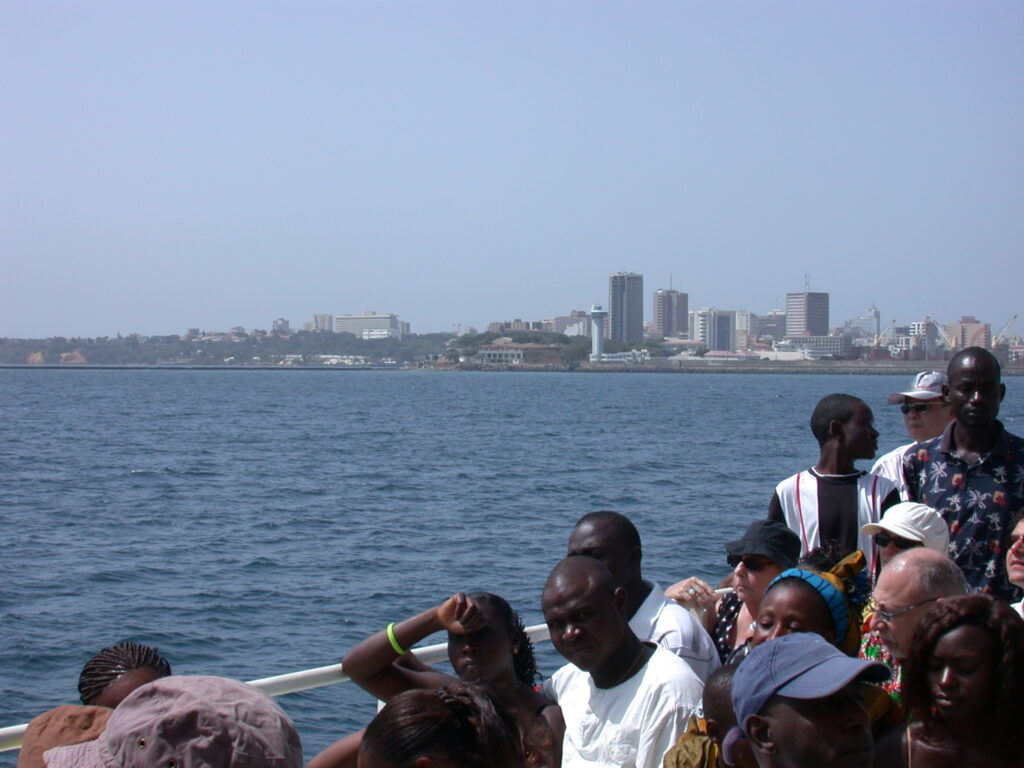
Soon, we reached the open sea with magnificent views of Île de Gorée.
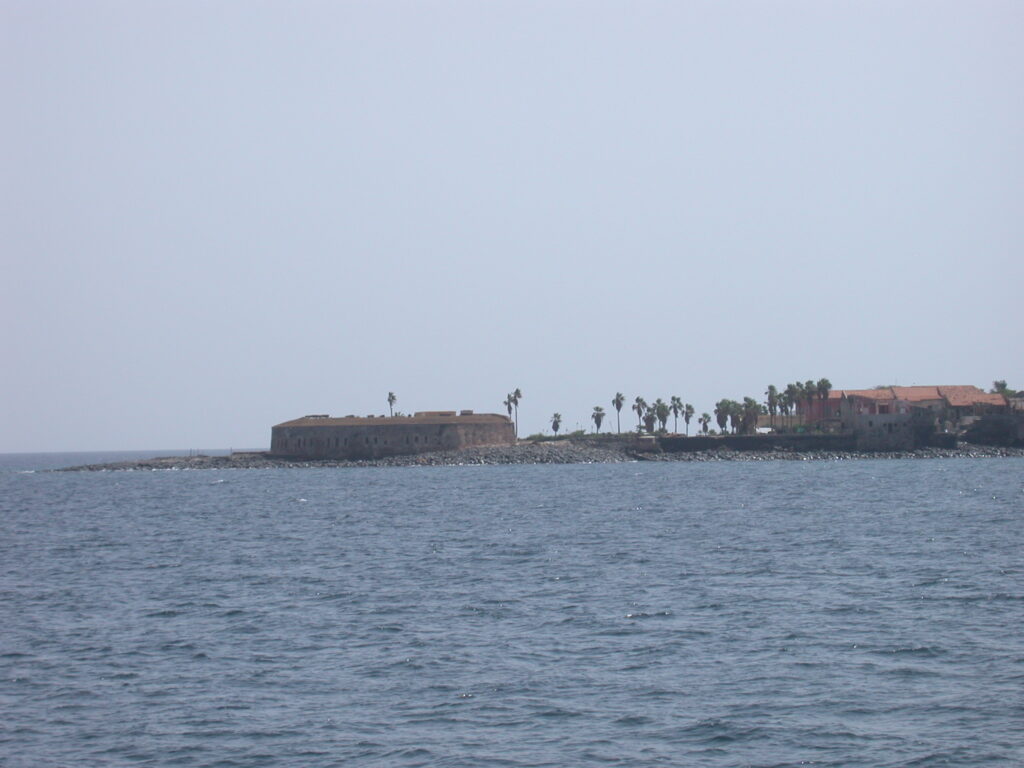
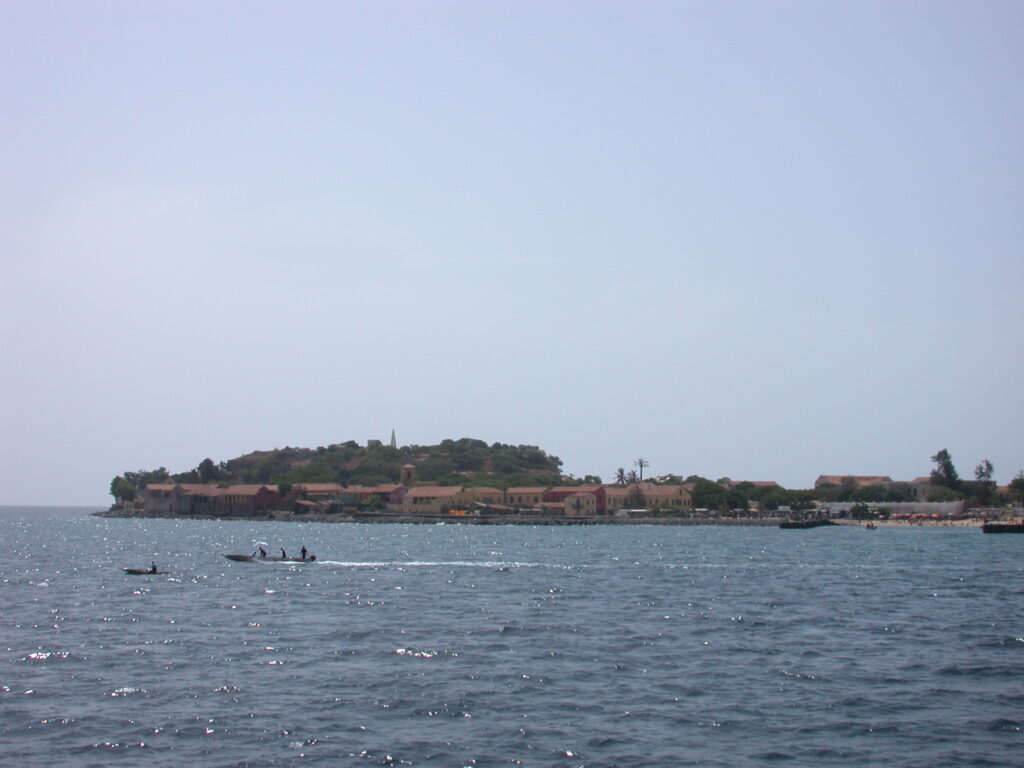
We sailed around the tip of the island where the fortress, now a museum, is located to get a great view of the harbor, beach, and seaside.

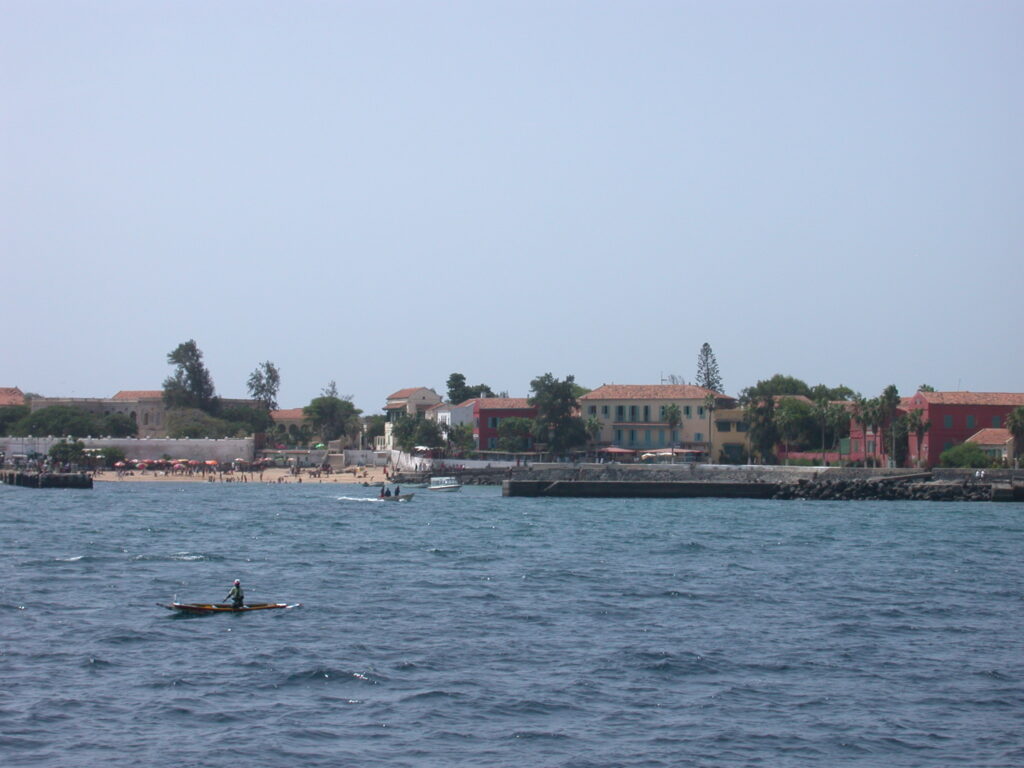
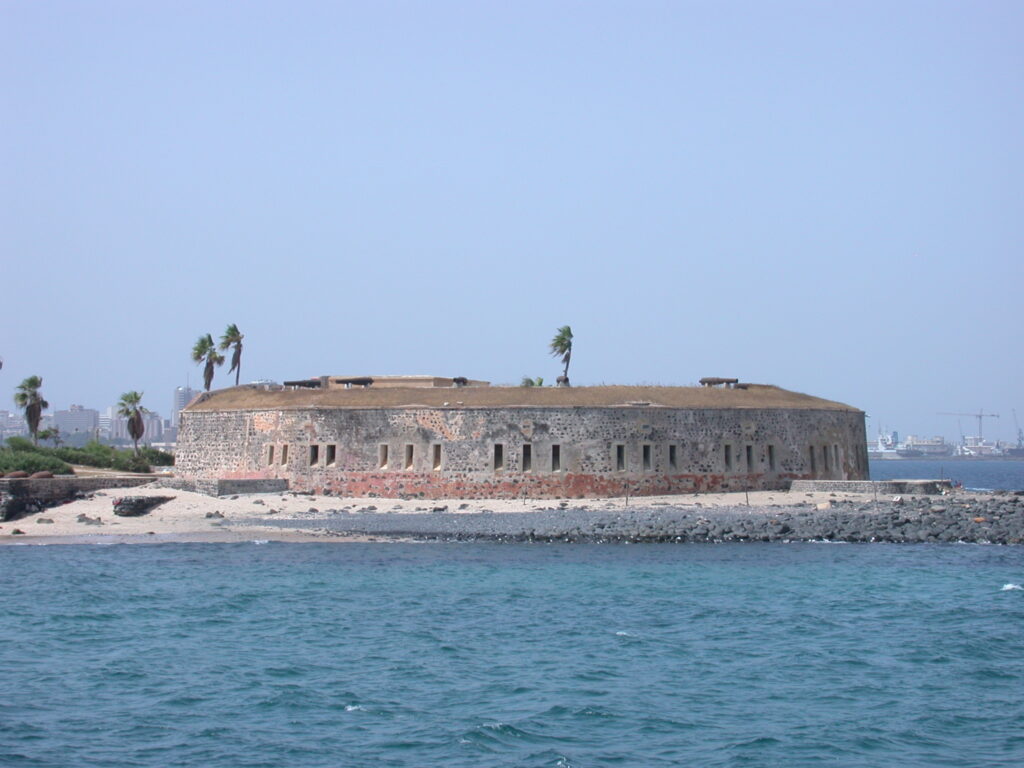
The island boasts some wonderful old houses.
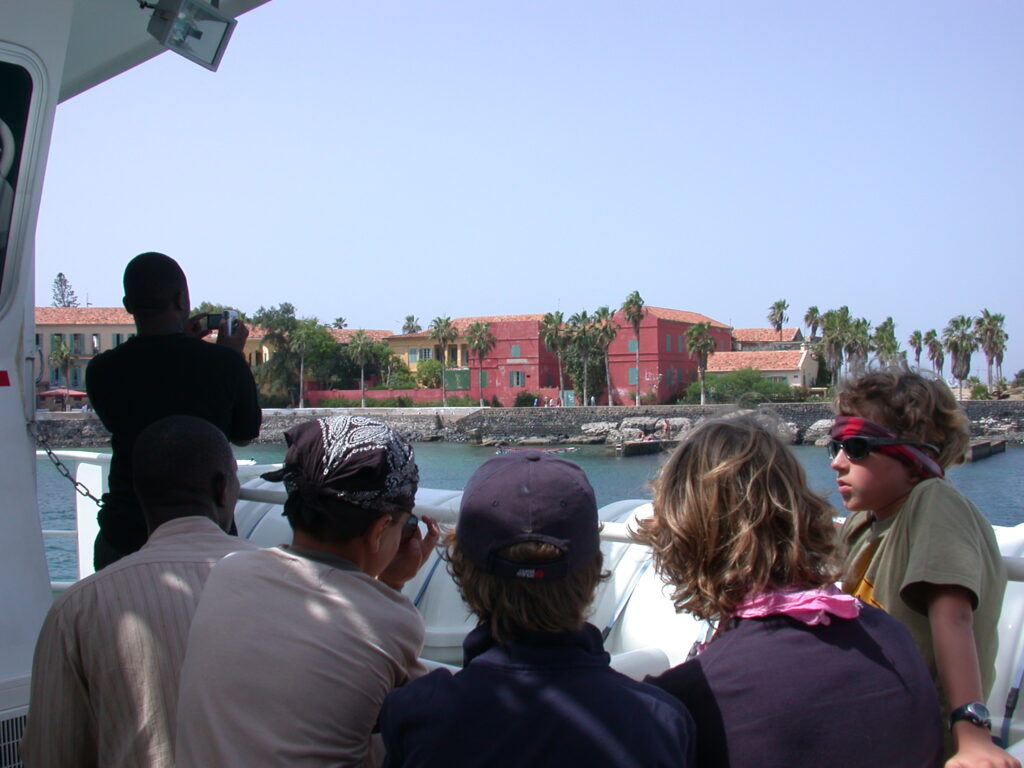
Once on land, we paid a tourist tax and walked toward the Maison des Esclaves (Slave House), which was closed for siesta time. On the way to the Maison, we saw this monument to the end of slavery with a man and some children having their photo taken alongside the monument.
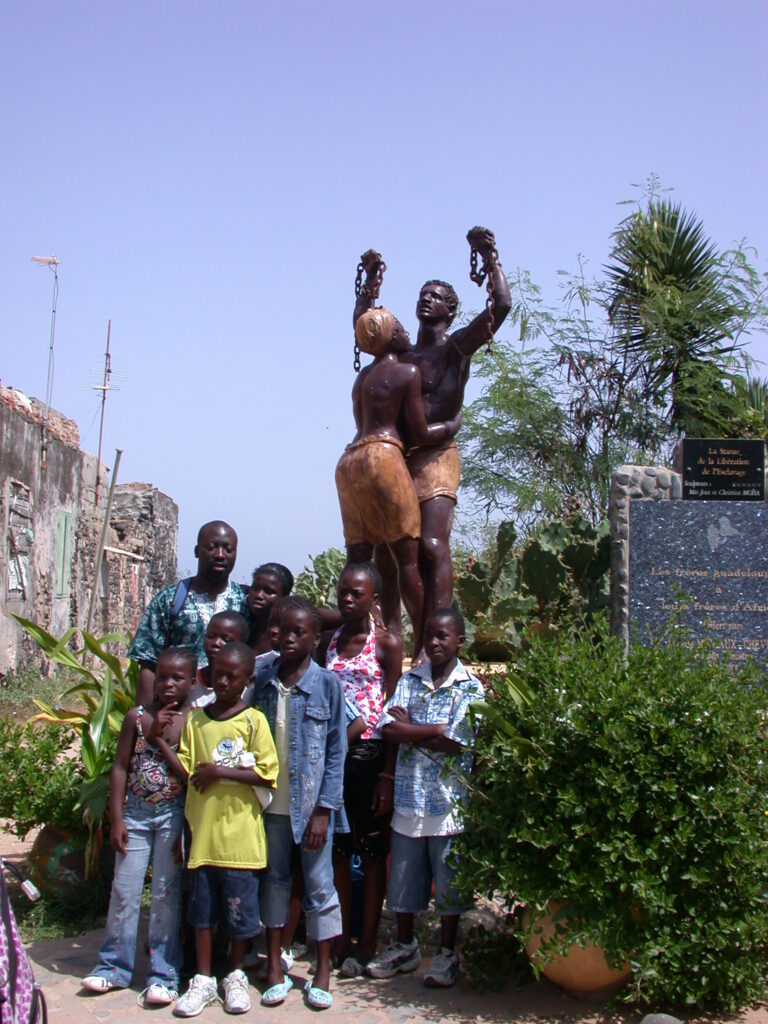
We also saw a breadfruit tree with breadfruit hanging from its branches.
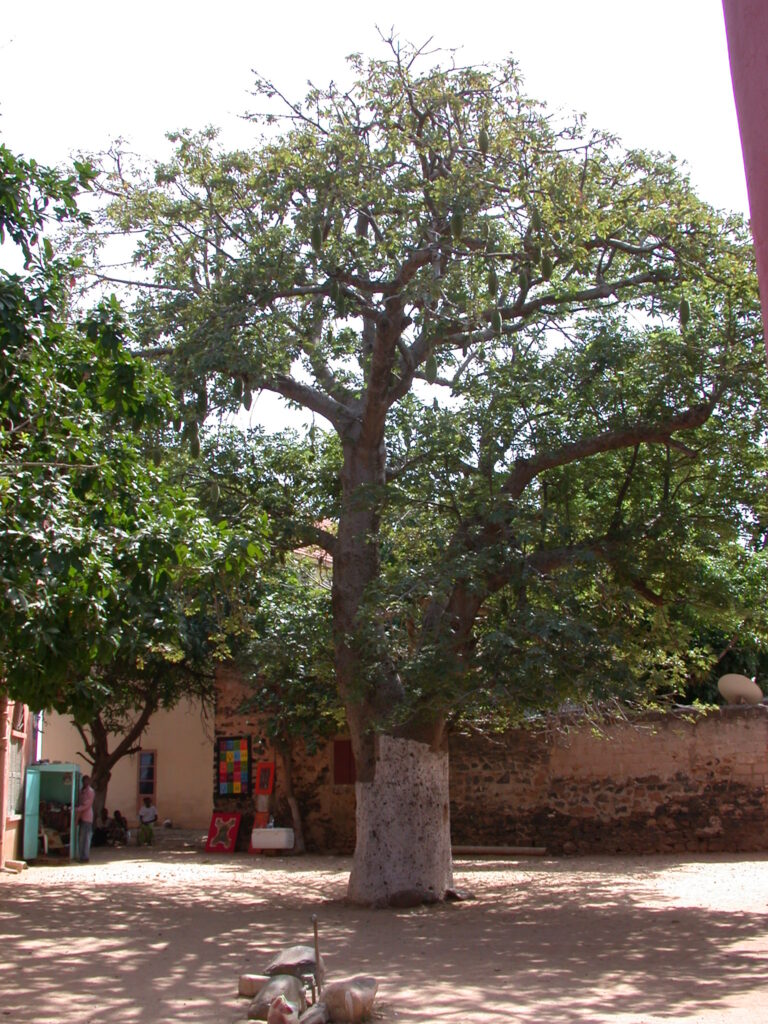
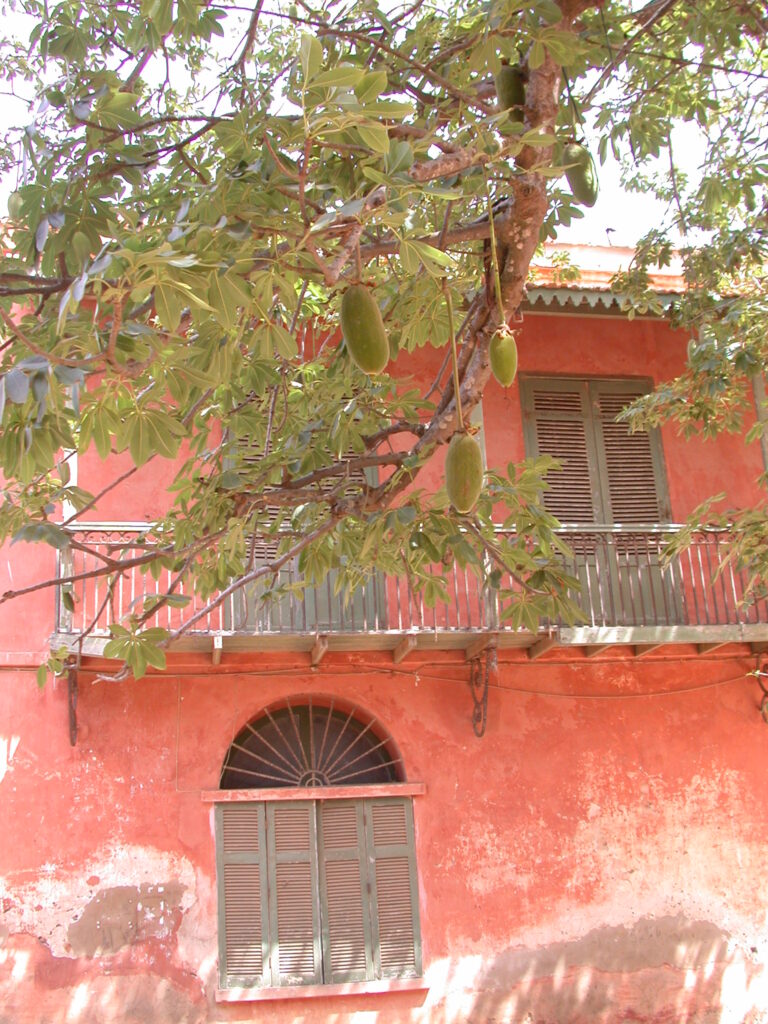
We entered a cathedral with some black statues, as well as white ones.
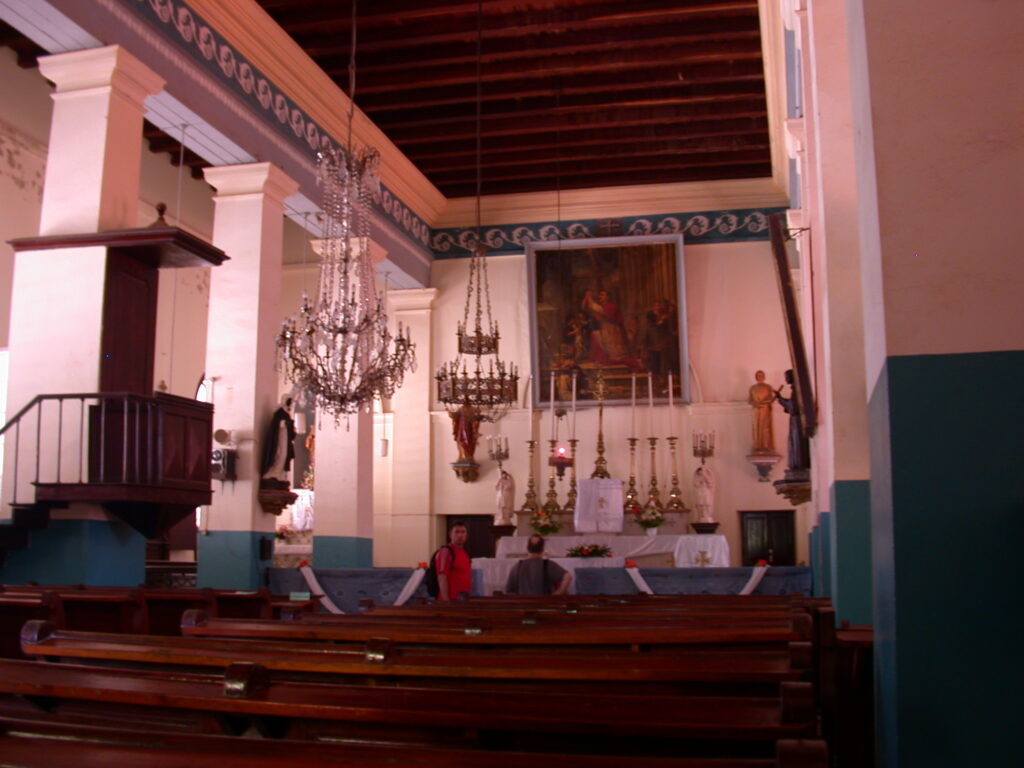

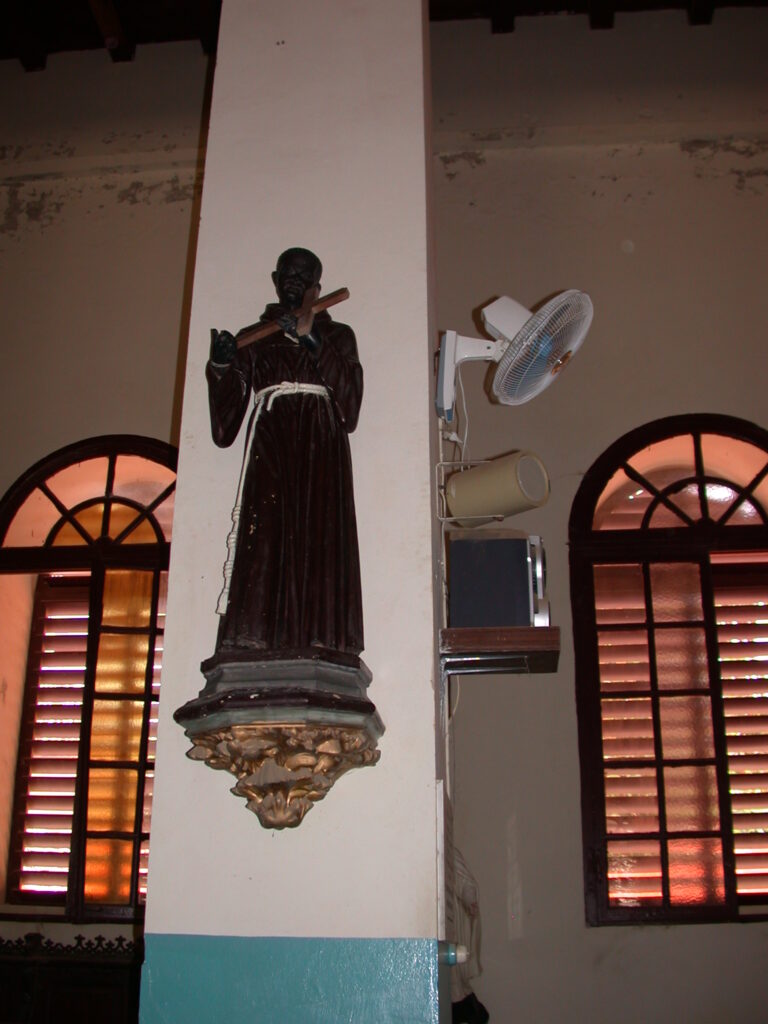
On our way up to a peak where the old cannons are gradually rusting away, we saw many arts and crafts stands and paintings painted by local artists.
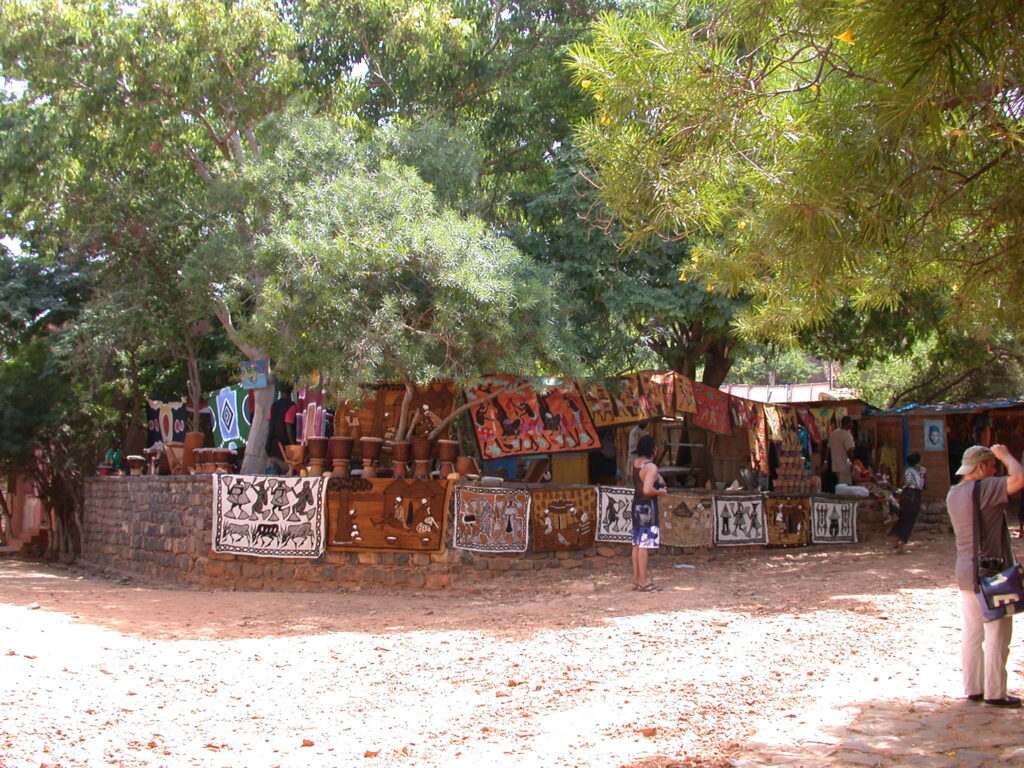
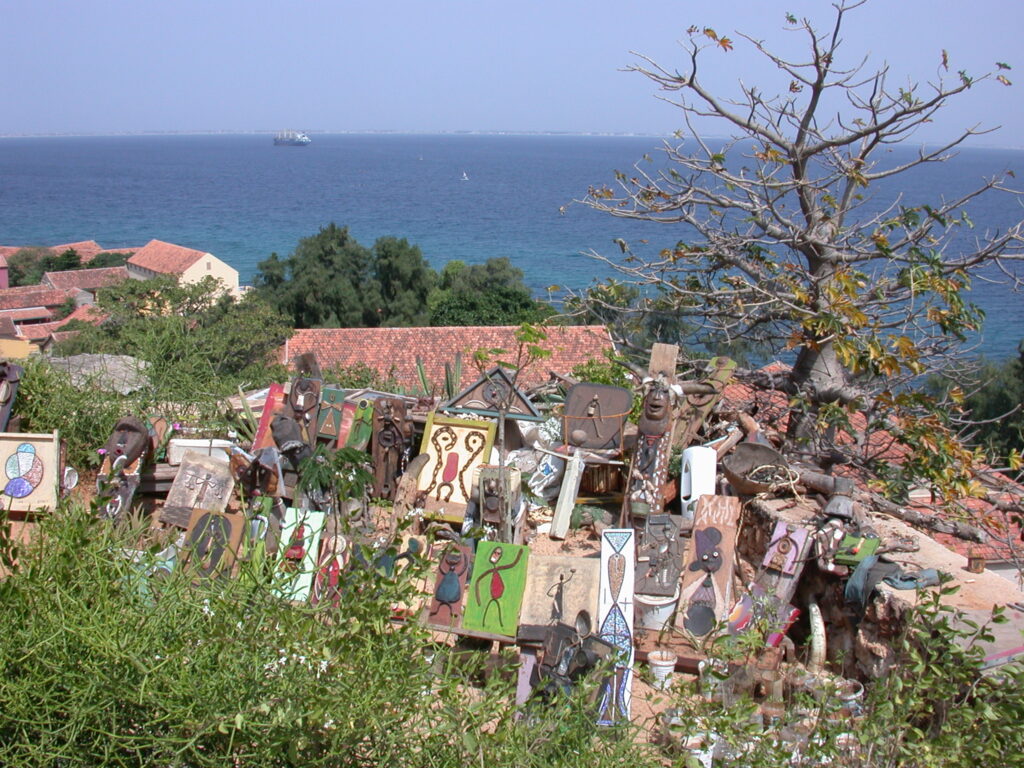
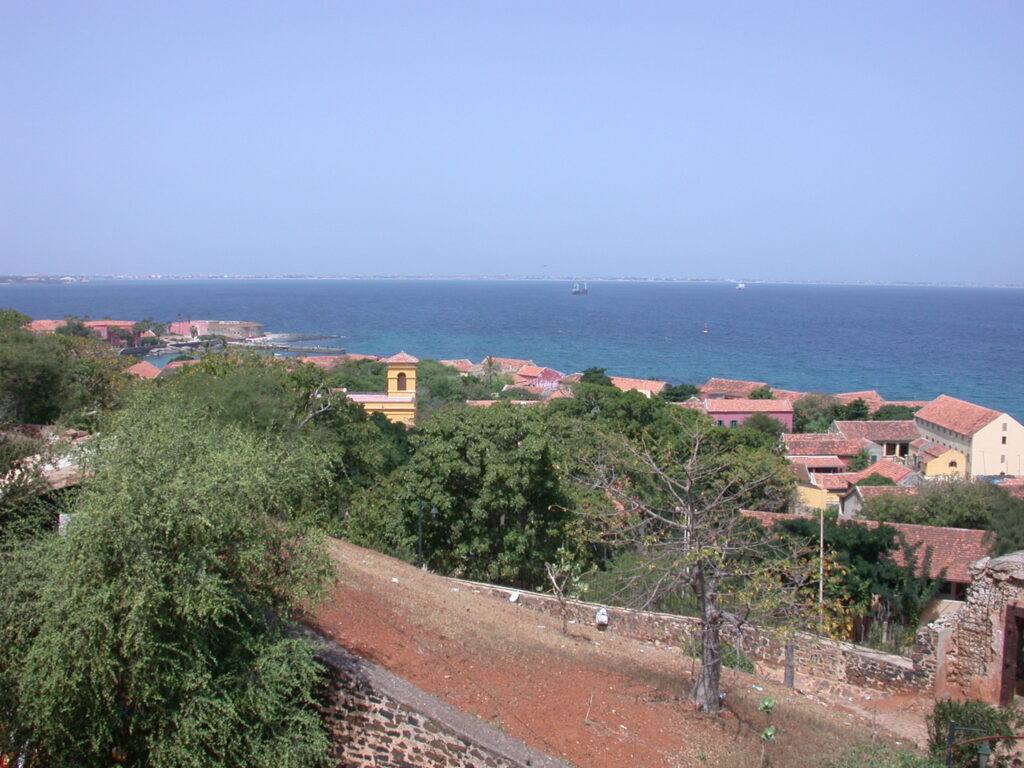
On the way down from the peak, we saw a local soccer game with some guys in real good shape.
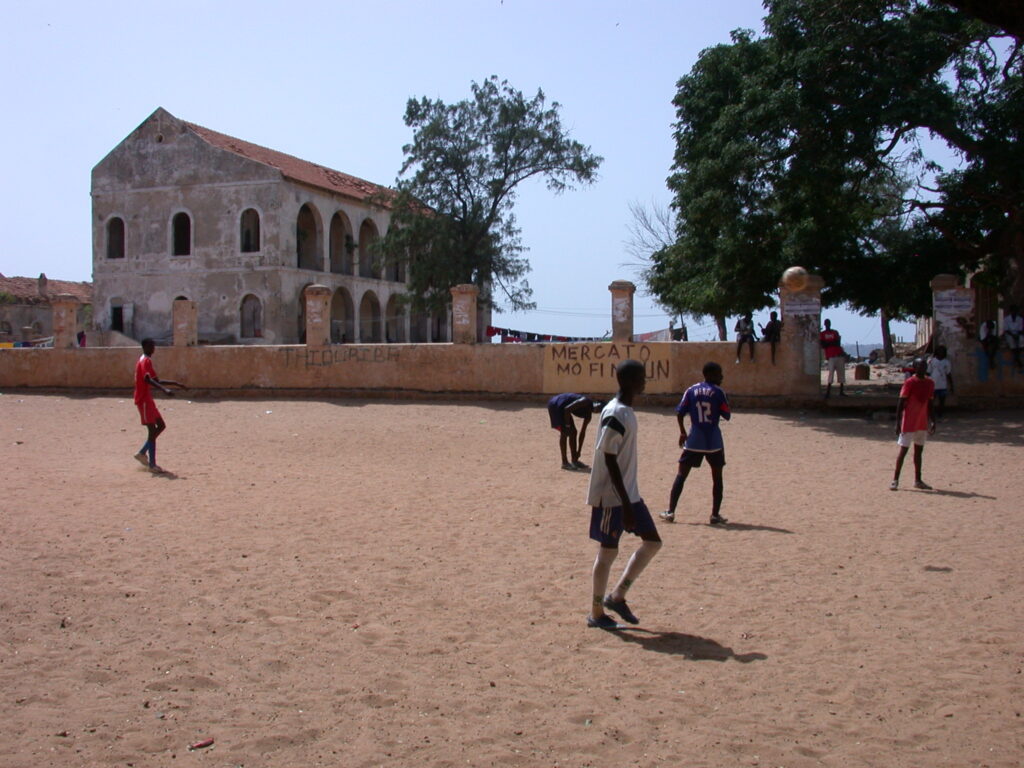
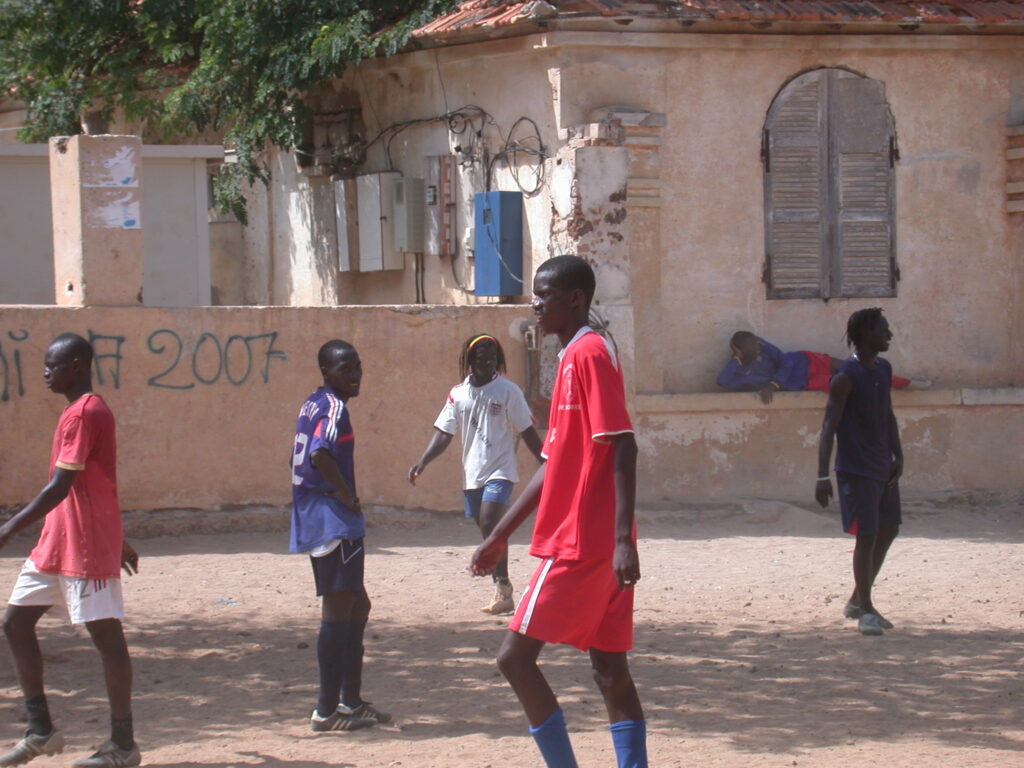
We walked over to the port for lunch. A man tried to get us to eat at his restaurant, but I really wanted to eat at the place recommended by the Lonely Planet guidebook. Eventually we escaped his clutches and made our way over to the Ana Saban restaurant.
After lunch, we went to the Musée Historique de l’IFAN on the island.
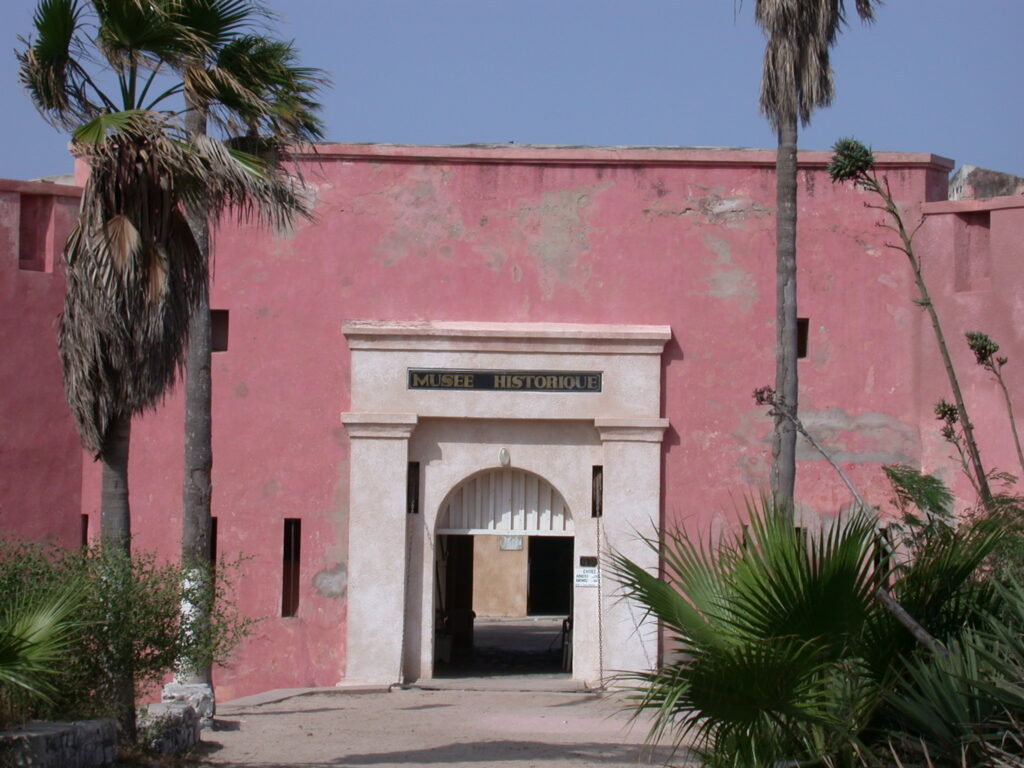
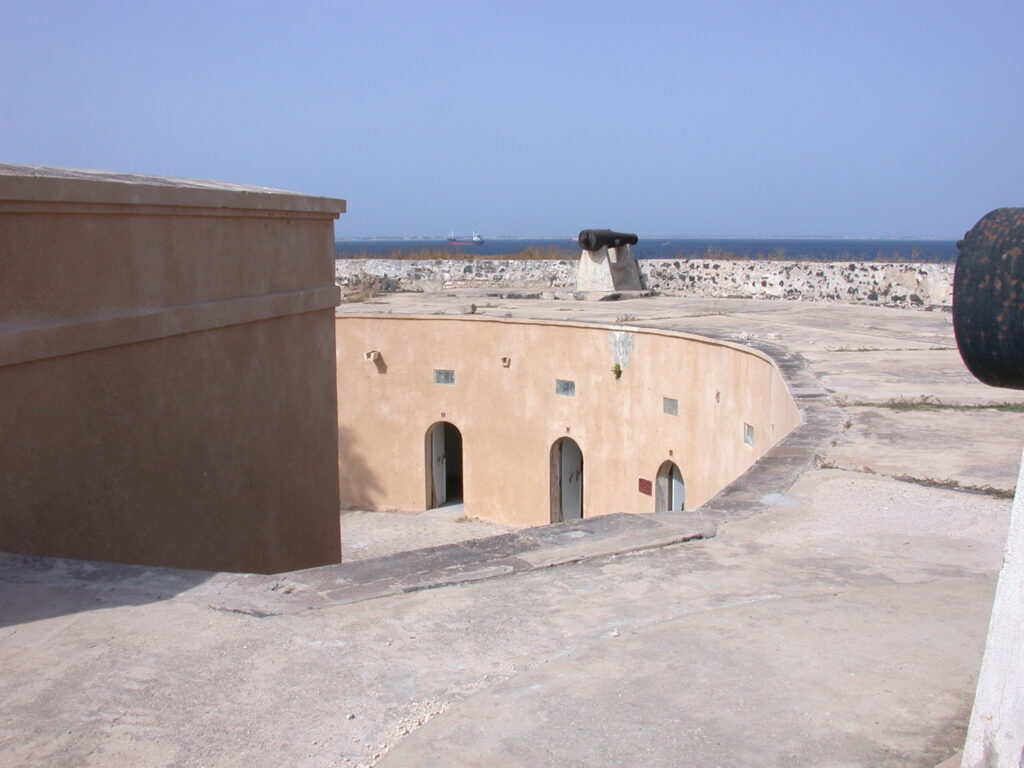
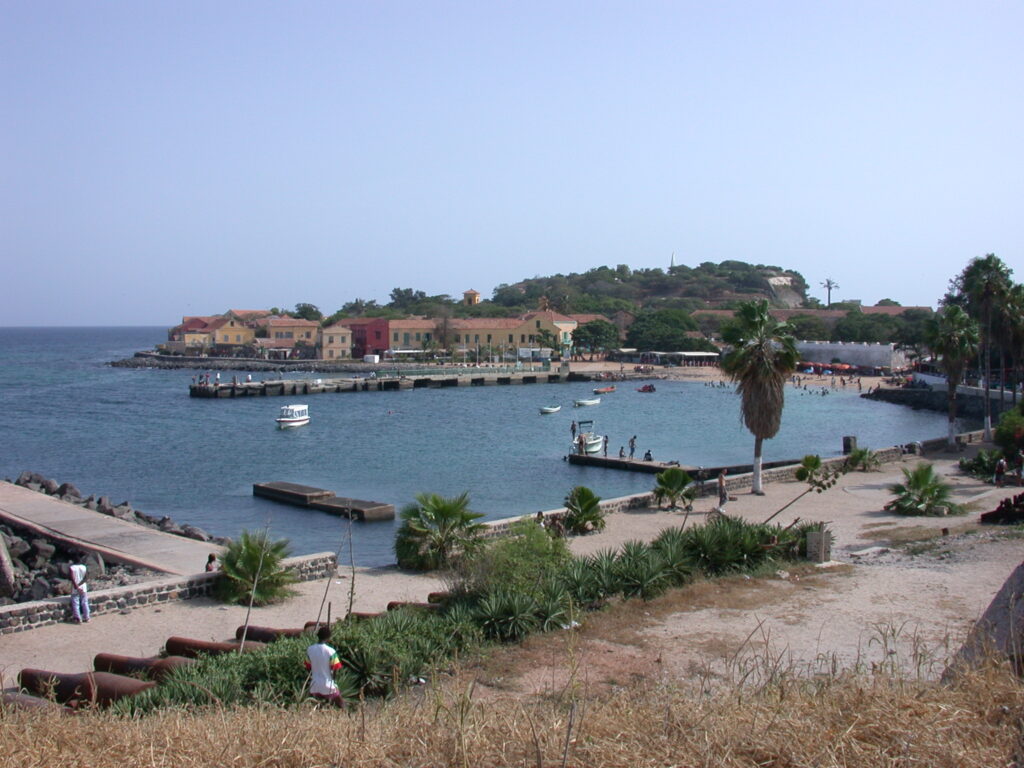
I somehow lost the Germans at the museum, so I walked alone back over past the beach to the Maison des Esclaves, now finished with their siesta break. I started by taking pictures of the “Door of No Return,” which was apparently the last place where slaves bound for the Great Passage across the Atlantic Ocean to the Americas set foot on the African continent.
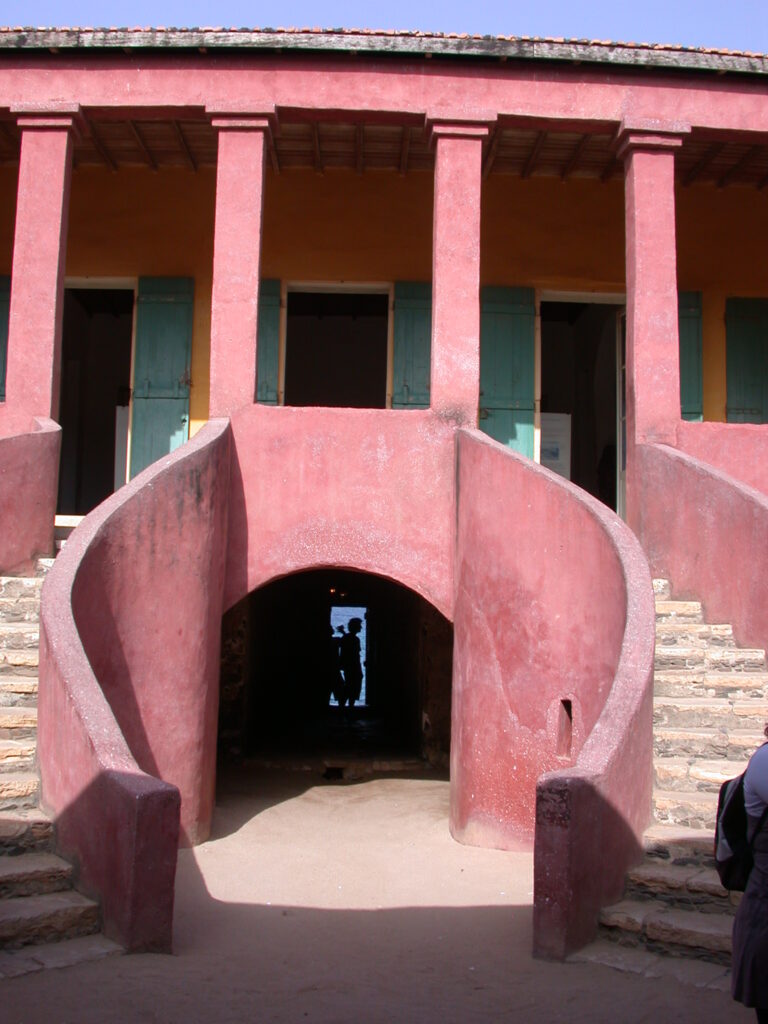
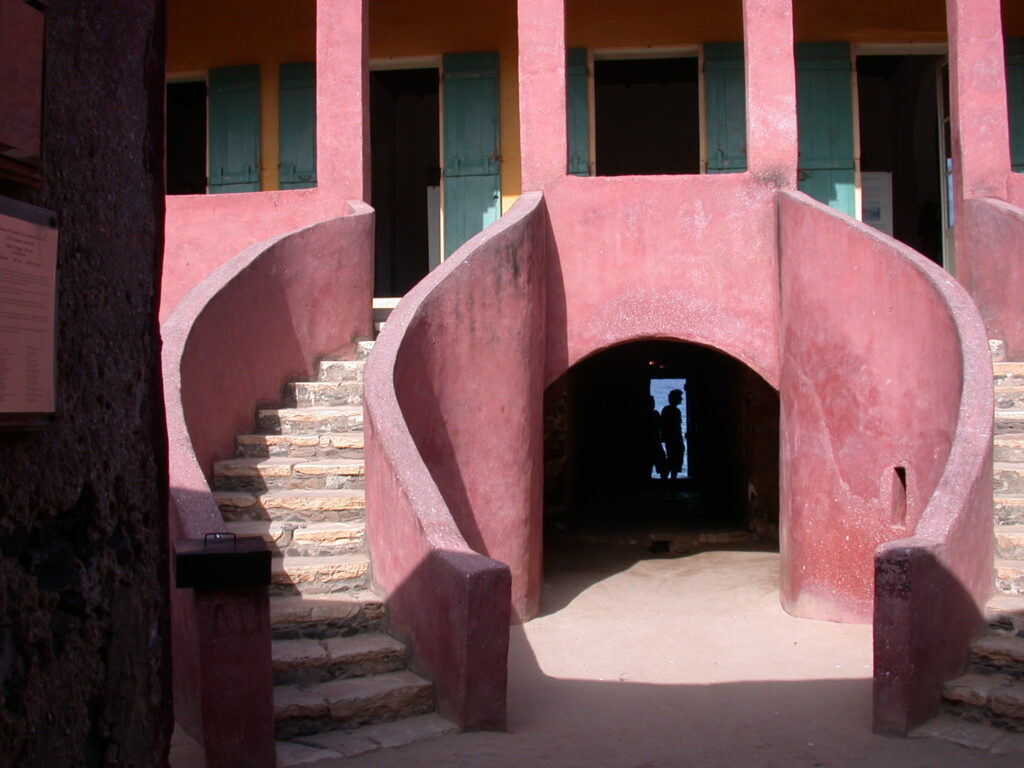
Here’s what it was like to stand just in front of the door out to where the slave ships used to load their human cargo and the sign currently posted by the Door of No Return.
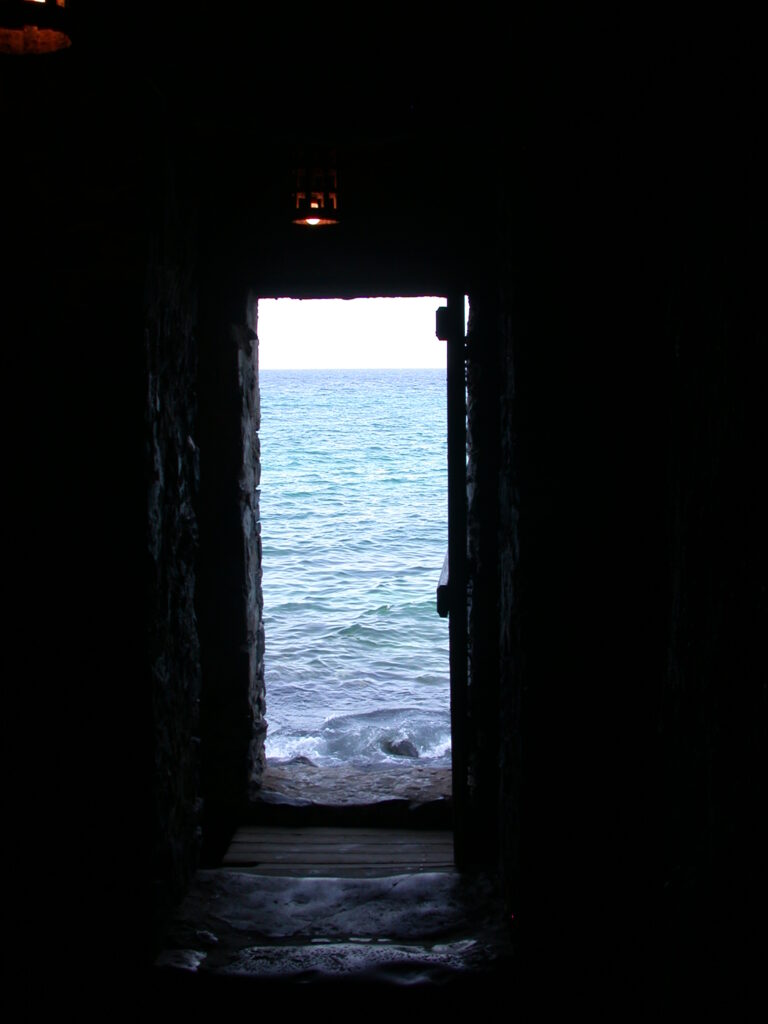
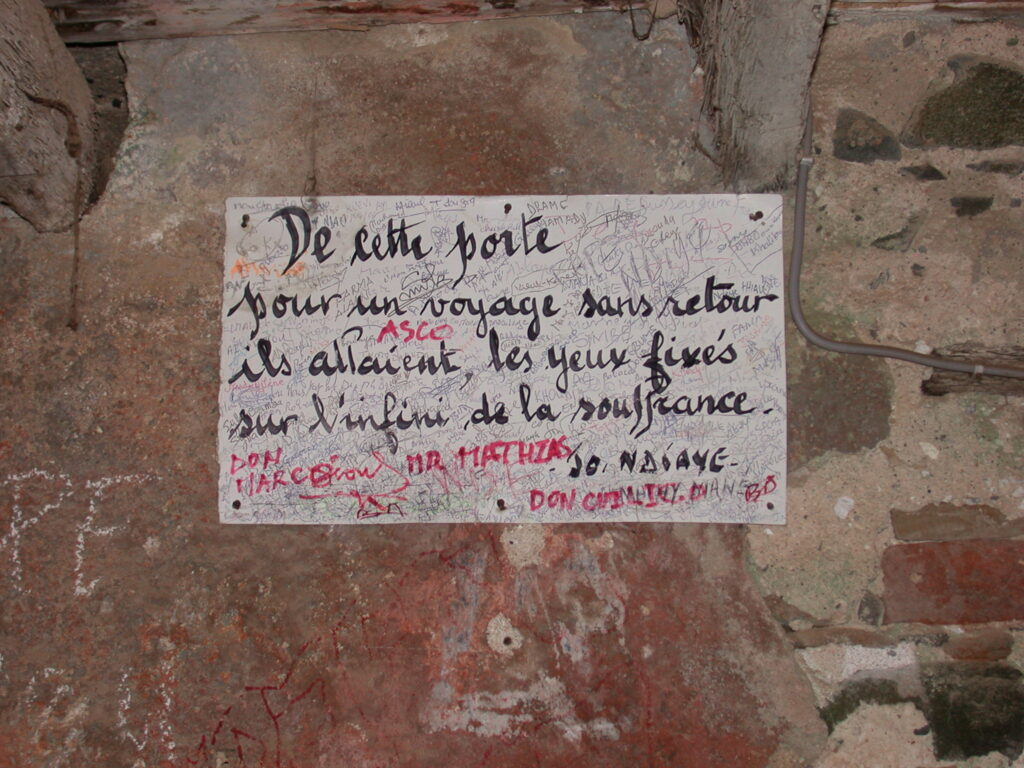
Inside the Maison des Esclaves, an exhibit explained about the history of the slave trade and showed some of the actual fetters used to bind slaves.
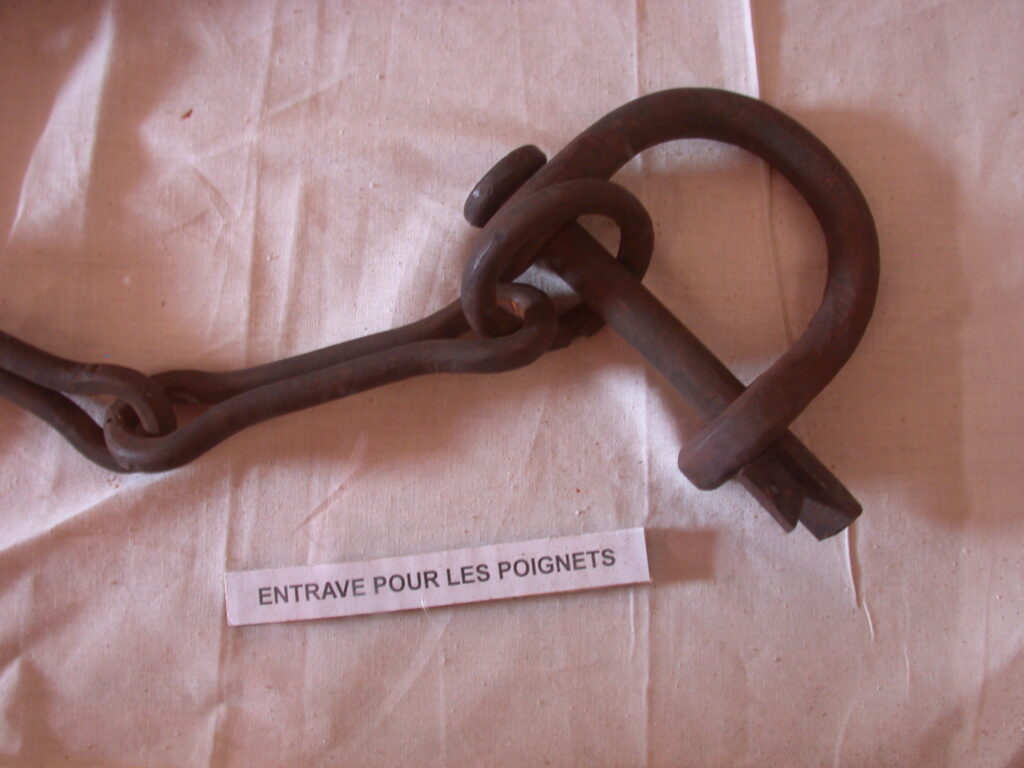
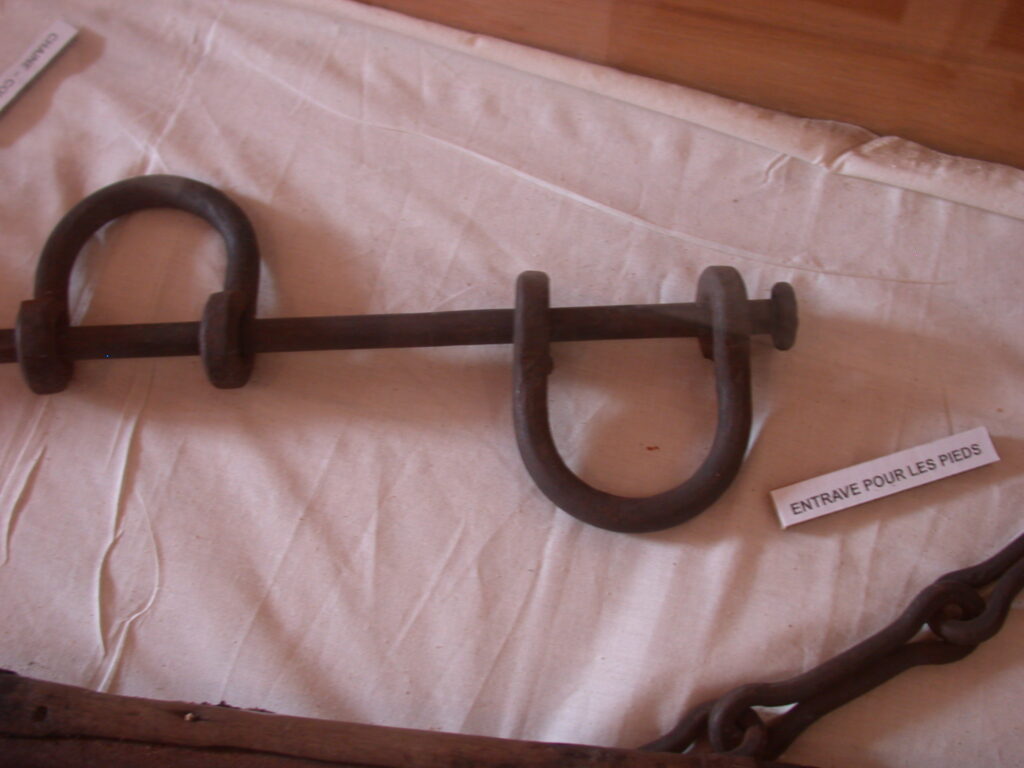
In a small museum office with lots of signs and sayings posted on the walls, there is an elder who must have helped to establish the museum. I went in to thank him for what he has done and he replied that to the contrary he must thank me for coming.
After the disturbing and moving museum, it was a real treat to be able to relax on the beach with locals and people visiting from all over the world. I met a sweet Italian fellow (married) who is working in nutrition in Africa. It was so much fun that the Germans and I had to run for the Beer ferry when it was time to go.
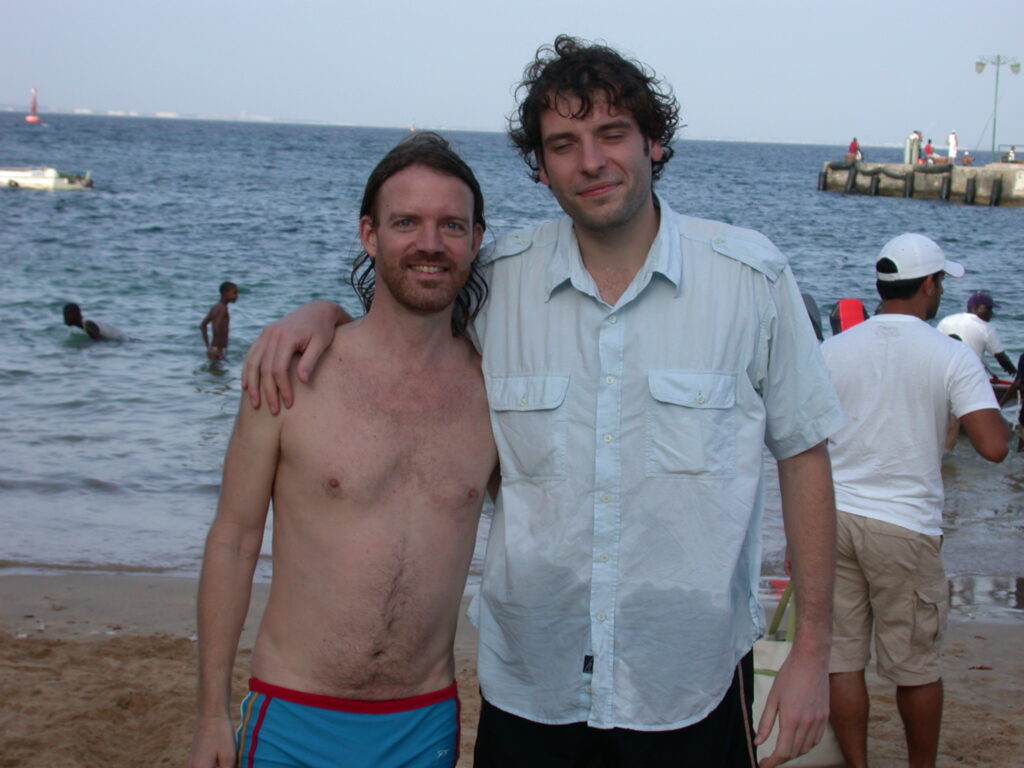
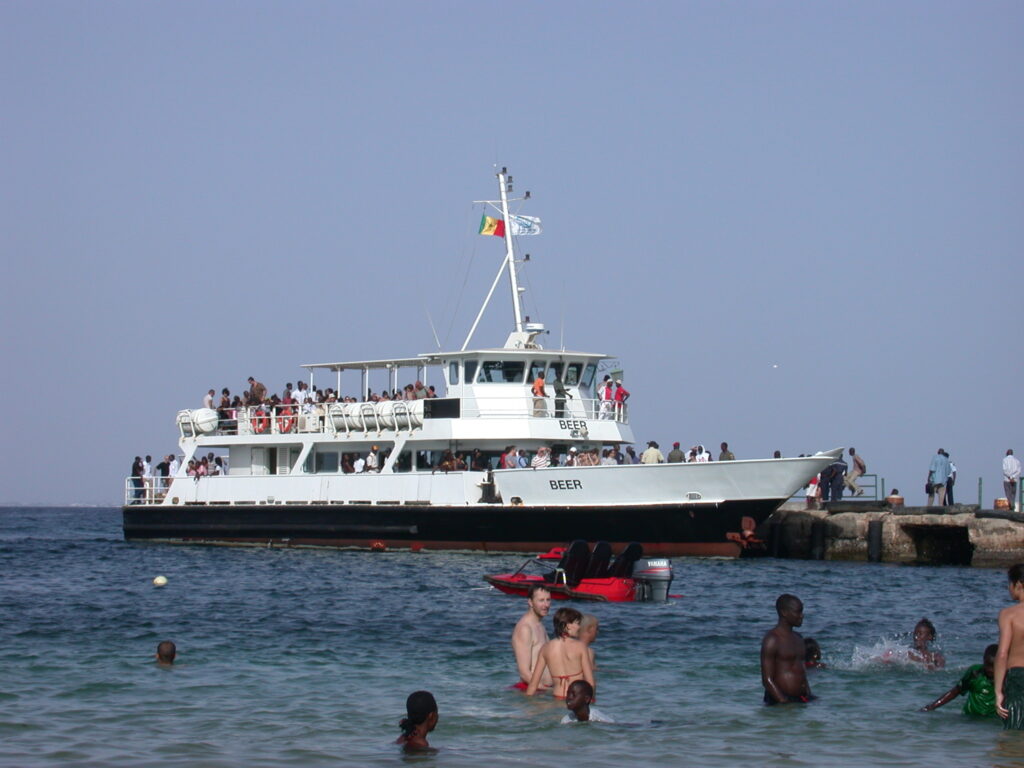
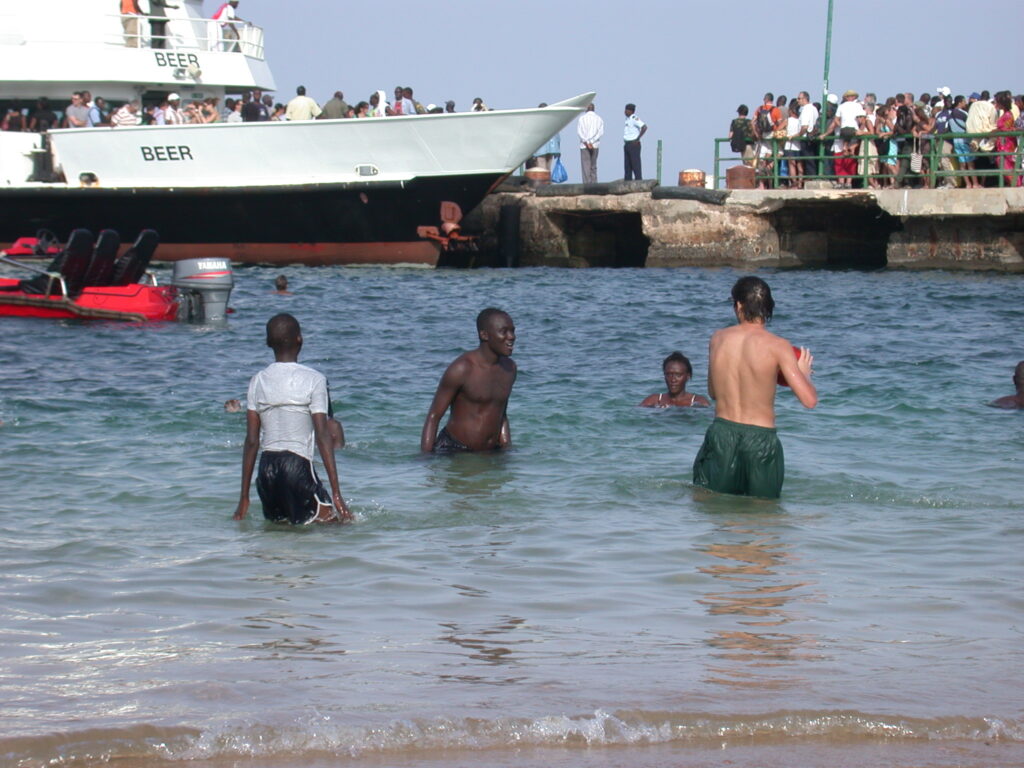

To round out the evening, we dashed to Point des Almadies to see the sunset and eat dinner on the seashore.
